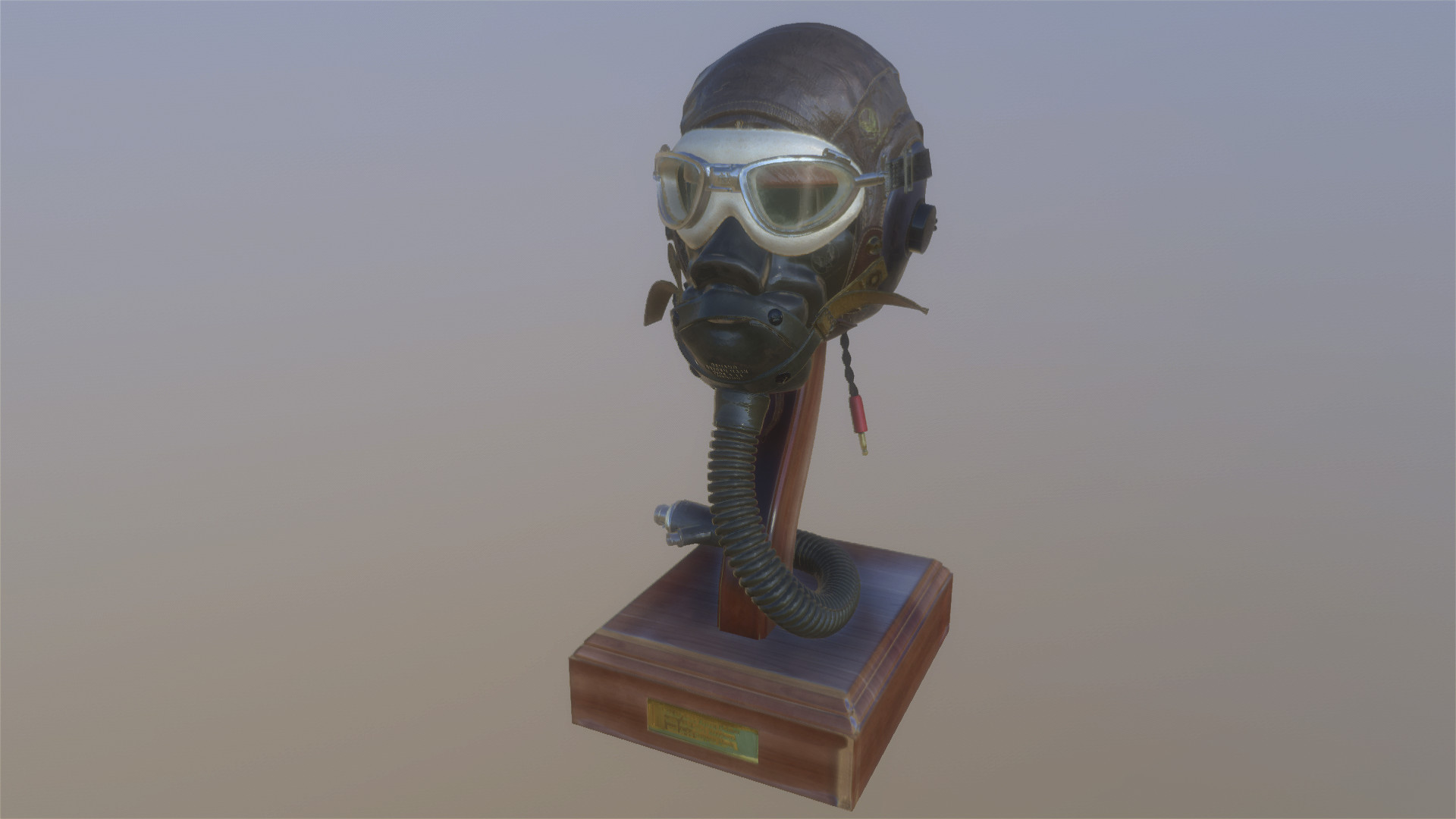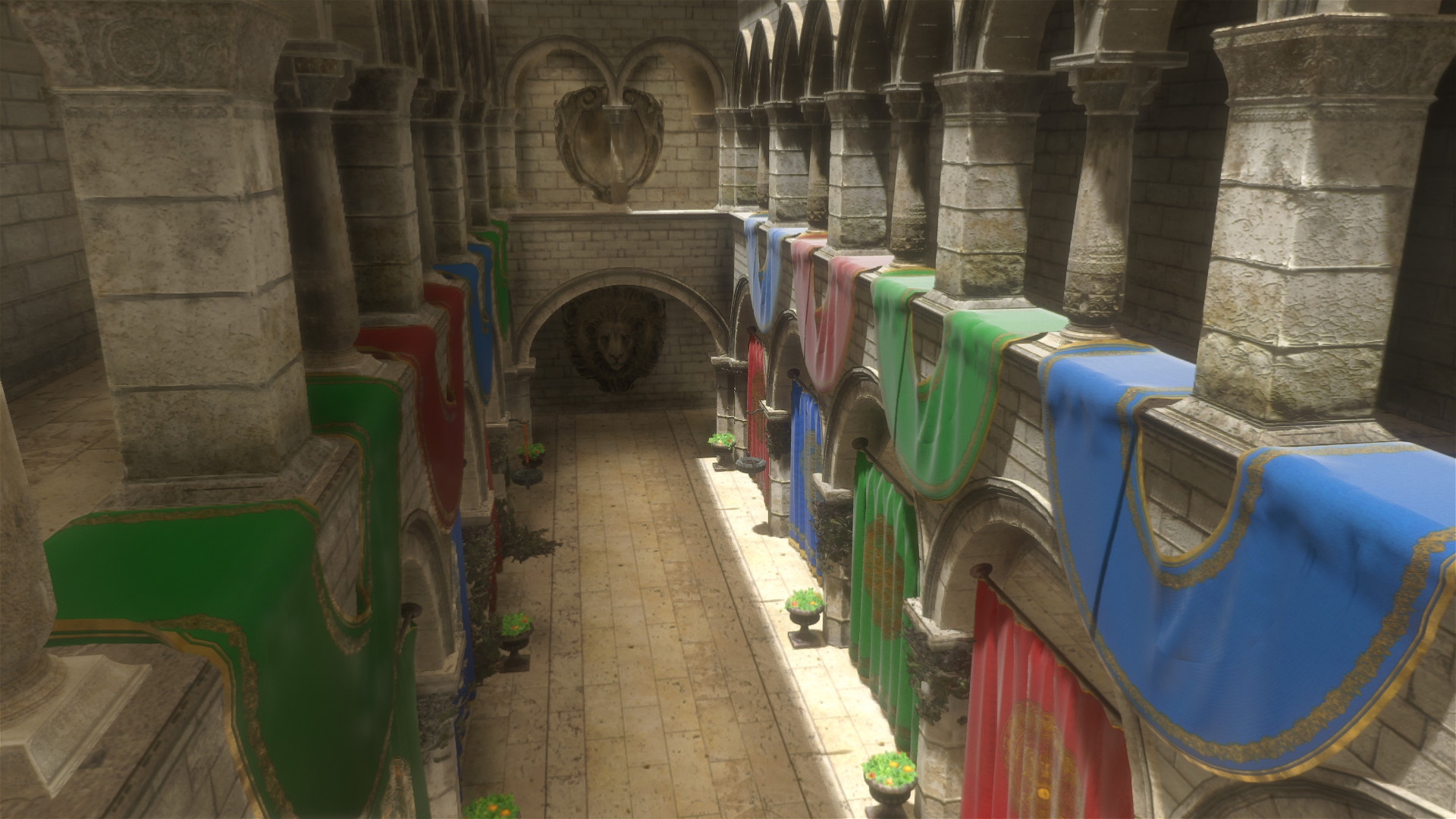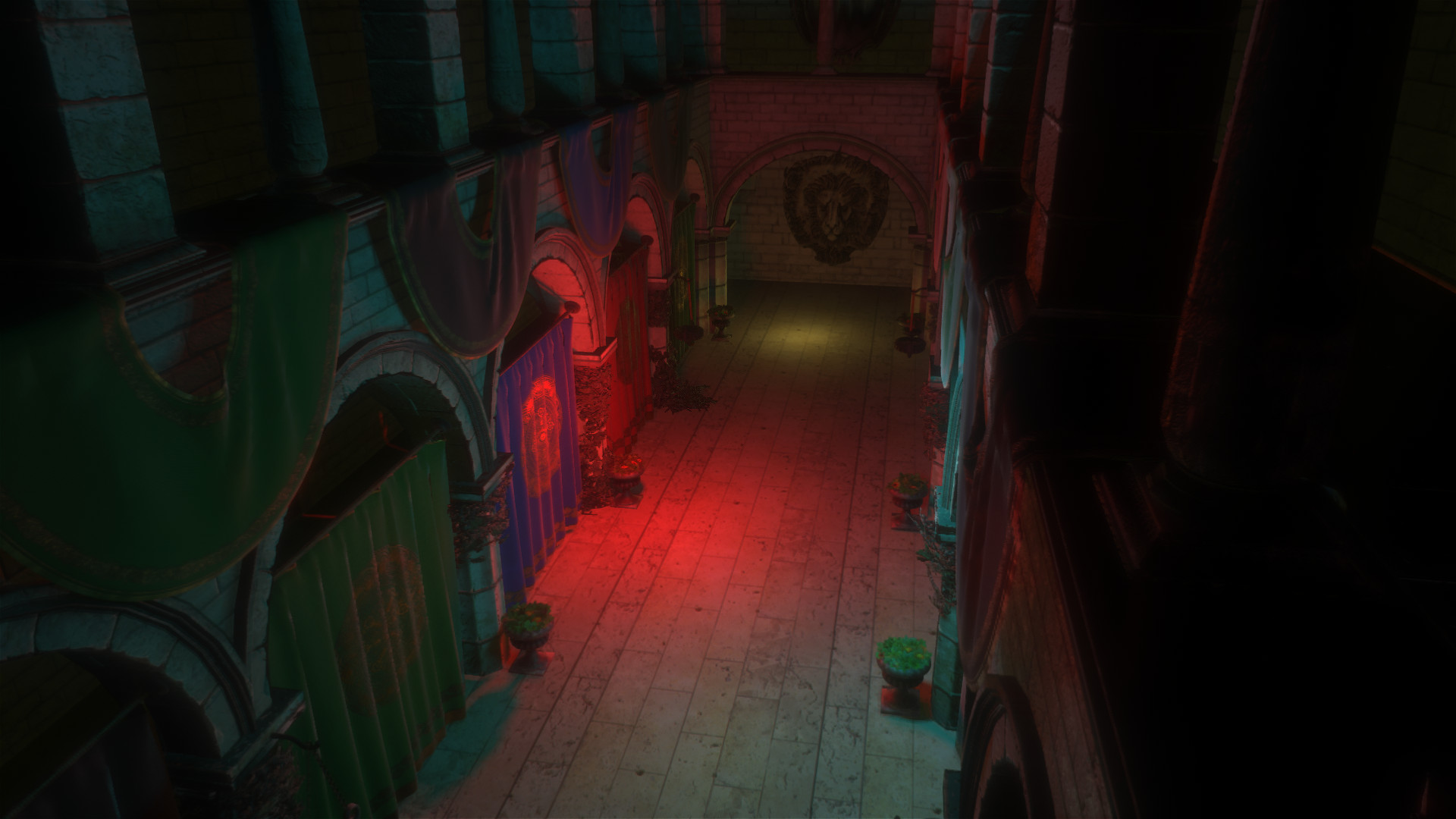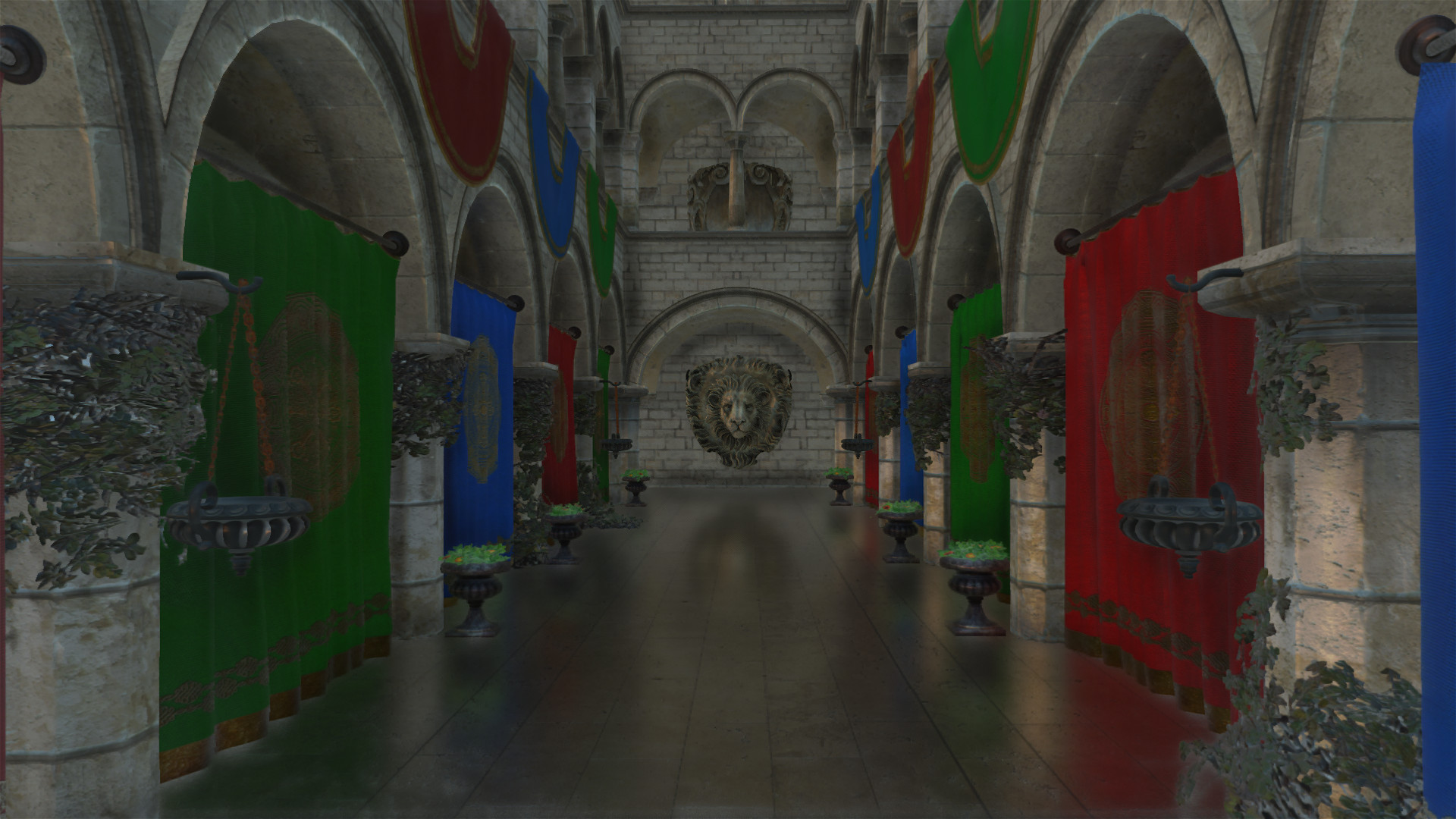OpenGL Renderer
The OpenGL renderer was my first attempt at a bigger rendering project, which combines multiple techniques and wraps the underlying API for convenient use.
It was also where I began implementing papers, starting with simple ones like cascaded shadow mapping and working my way up to more advanced ones, like temporal anti aliasing.
Furthermore it served as a starting point for my bachelor thesis about global illumination approximations,
in which I implemented light propagation volumes(LPVs), screen space reflections(SSR) and screen space directional(SSDO) occlusion.

The project is written in C++ and renders in a deferred manner, altough forward materials are supported.
Image based lighting(IBL) is implemented, using the traditional approach of
pre-convolving an HDRi cubemap and using the split-sum approximation for the specular BRDF.

The sun light supports cascaded shadow mapping, with the option of texel-snapping and rotational invariant projection to avoid flickering under movement and rotation. Additionally shadowed point lights are supported.

SSR and SSDO are computed at half resolution to save on processing time. They both use a combination of spatial and temporal filtering for a smooth and stable appearance. Depending on the global illumination algorithm, reflections from the IBL or the LPV are used as a fallback, in case the reflection information is not available in screen space.
